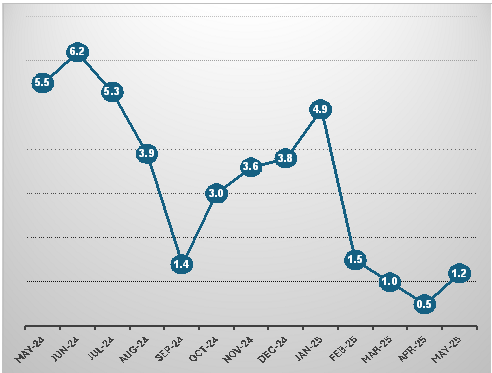Table 1: Year-on-Year Inflation Rates, Bottom 30% Income Households: Kalinga
(2018=100)
Area | May 2024 | April 2025 | May 2025 | Year-to-Date |
Kalinga | 5.5 | 0.5 | 1.2 | 1.8 |
Figure 1: Inflation Rates of the Consumer Price Index for the Bottom 30% Income Households in Kalinga, All Items in percent
(2018=100)

Overall Inflation
The Kalinga’s inflation rate for the bottom 30% income household increased to 1.2 percent in May 2025 from 0.5 percent in April 2025. This makes the provincial average inflation at 1.8 percent. In May 2024, the inflation rate was higher at 5.5 percent.

Main Drivers to the Upward Trend of the Headline Inflation
The increase in the overall inflation for the Bottom 30% Income Households in May 2025 was primarily brought about by the increased from the group Restaurants and Accommodation Services at 1.4 percent from 0.6 percent and Housing, water, electricity, gas and other fuels with -1.6 percent from -7.2 percent.
On the other hand, the following groups showed slow monthly decrease
a. Food and non-alcoholic beverages with 2.1 percent from 2.8 percent;
b. Alcoholic beverages and tobacco at 1.3 percent from 1.5 percent;
c. Recreation and culture at 1.1 percent from 1.5 percent;
d. Clothing and footwear at 1.1 percent from 1.3 percent;
e. Personal care, goods and miscellaneous services at 1.3 percent from 1.5 percent
f. Health at 0.6 percent from 0.7 percent Information and communication with 0.5 percent from 0.4 percent.
g. Information and communication with 0.5 percent from 0.4 percent.
Meanwhile, there is no change in the commodity group of Financial Services, Education services, Furnishings, household equipment and routine household maintenance and Transport.
Food Inflation
Food deflation at the provincial level for the bottom 30% income household decreased to 1.9 percent in May 2025 from 2.5 percent in the previous month. In May 2024, food inflation was higher at 10.6 percent.
Main Drivers to the Downward Trend of Food Inflation
The deceleration of food inflation in May 2025 was primarily brought about by the following groups,
a. Cereals (ND) with -4.3 percent from –1.9 percent;
b. Milk, other dairy products and eggs with 2.9 percent from 4.4 percent;
c. Fruits and nuts with 4.0 percent from 6.0 percent;
d. Oil and fats with 0.1 percent from 0.5 percent and
e.Sugar, confectionery and desserts with -0.1 percent from 0.3 percent
On the other hand, the following commodity groups registered higher inflation rates during the month:
a. Vegetables, tubers, plantains, cooking bananas and pulses with 6.2 percent from 3.3 percent;
b. Meat and other parts of slaughtered land animals with 13.5 percent from 12.5 percent;
c. Fish and other sea foods with 8.2 percent from 5.9 percent; and
d. Ready-made food and other food products n.e.c. with 6.2 percent from 5.4 percent
Table 3: Year-on-Year Food Inflation for the Bottom 30% Income Household in Kalinga, in percent
May 2025
(2018=100)
Commodity Group | May 2024 | April 2025 | May 2025 |
Food | 10.6 | 2.5 | 1.9 |
Cereals and Cereal products (ND) | 19.2 | -1.9 | -4.3 |
Cereals (ND) | 22.3 | -2.3 | -5.1 |
Rice | 22.5 | -2.4 | -5.2 |
Corn | 7.4 | 7.0 | 4.1 |
Flour Bread and other bakery products, Pasta products etc. |
3.1 |
0.6 |
0.3 |
Meat and other parts of slaughtered land animals (ND) |
0.2 |
12.5 |
13.5 |
4.8 | 5.9 | 8.2 | |
Milk, other dairy products and eggs (ND) |
15.1 |
4.4 |
2.9 |
Oils and fats (ND) | 1.2 | 0.5 | 0.1 |
Fruits and nuts (ND) | -3.5 | 6.0 | 4.0 |
Vegetables, tubers, plantains, cooking bananas and pulses (ND) |
6.5 |
3.3 |
6.2 |
Sugar, confectionery and desserts (ND) |
-11.0 |
0.3 |
-0.1 |
Ready-made food and other food products n.e.c. (ND) |
8.1 |
5.4 |
6.2 |
Main Contributors to the Food Inflation
Main Contributors to the Food Inflation
The top three (3) food groups in terms of contribution to the food inflation during the month were the following;
a. Meat and other parts of slaughtered land animals;
b. Fish and other seafood and
c. Milk, other dairy products and eggs
sgd.
MARIBEL M. DALAYDAY
Chief Statistical Specialist

